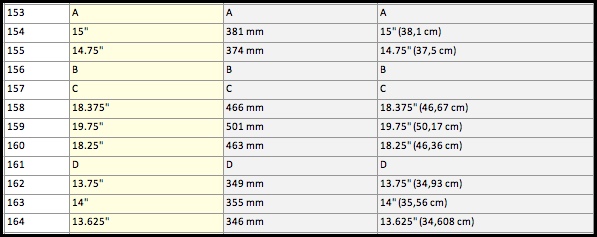Proper translation and conversion of measurements listed in technical specifications, material safety data sheets (MSDS), and user documentation can prove to be tricky. By following a few simple steps, you can simplify the process and make sure your translation teams are handling measurements consistently.
Here are some important questions to consider in setting some standards on how you will handle measurements in translation.
1. What units of measure will you use in conversion?
This question is a matter of preference. For example, if your specifications use inches, will you use centimeters or millimeters in conversion? Will the answer depend on how large the measurement is? Let’s consider that 1 inch equals 2.54 cm or 25,4 mm and that 1/4 inch equals 0.635 cm or 6.35 mm Either unit of measure might be fine for your specifications. However, you might defer to cm for larger measurements and millimeters for smaller units.
2. What tolerance will you use for rounding measurements?
Some measurement conversions end up in multiple decimal places. How many places will you list? Will you round up or down? Your answers might depend on your product and how important the precision of measurements is to the end user. The dimensions of a lawn chair may not be as important as the dimensions of a washer or bolt.
3. Do you have a style guide or set of rules to provide your translation vendor?
If you handle translation projects that require multiple languages, it would be a good idea to create a style guide or at least a set of guidelines outlining your answers from the first two points. By outlining your preferences, you give your translation project manager and translators a clear understanding of how you want measurement conversions handled in your projects. This will save you time related to creating markups and reworking after the translation is completed.
Customers will typically provide both standard English units of measure and the metric conversion in their source documents. That is the single best way to ensure that conversions are handled properly as the translators will then just flip the metric conversion to the first unit of measure and the English standard unit to the second listed unit.
In the absence of a provided unit of measure, most translators will simply convert the measurement to what they believe is the most common and most appropriate unit of measure for the target country.
Let’s look at some real-life examples to see how the absence of a strategy for measurements can cause issues in your translation projects.
Here is an example where the customer provided the conversion and we simply stick to what was provided (French 1st, German 2nd).
Here is an example where the customer didn’t provide conversions and the linguists used the norms for their country (French 1st, German 2nd).
The reason you don’t see round in the French is that you typically wouldn’t provide a fraction of a millimeter or small unit of measure. Also, rounding up on length for specs is a little dangerous depending on the context.
Keep in mind your translation vendor can conform to whatever standard you choose but if the translation firm has to do the conversions, the appropriate method would be to do them in English first, update the source, and that way the translators would all be consistent across all languages. That would also require the translation vendor to submit the English for approval on conversions before beginning the translation process. That typically would add some time and cost to the front end. In order to avoid the extra cost and retain control of the source content, the customer should update the source content with the proper conversions since your translation vendor shouldn’t have the responsibility for the source content.
As a best practice, the customer should control the source content and work closely with the translation vendor and come up with a solid set of guidelines on how to handle measurements consistently.







_11zon.webp?width=438&height=197&name=WPML_logo%20(1)_11zon.webp)
